The road connecting the airport to Budapest opened 77 years ago in 1943. At the time it was state of the art. The plans incorporated aspects of the Italian autostrada and expected the road to be used by fast vehicles only. As a result, it was designed for speeds of up to 100 km/h.
In addition, the country’s first expressway opened much earlier than the airport which it was intended to serve. The road was opened in 1943, while the airport only received passengers for the first time years later, in 1950. True, the World War and subsequent reconstruction intervened.
As private individuals were practically barred from owning cars between 1950 and 1958 the road was hardly used. It only began serving its purpose – a fast route to the airport – in the 1960s, when private vehicle ownership and travel overall increased.
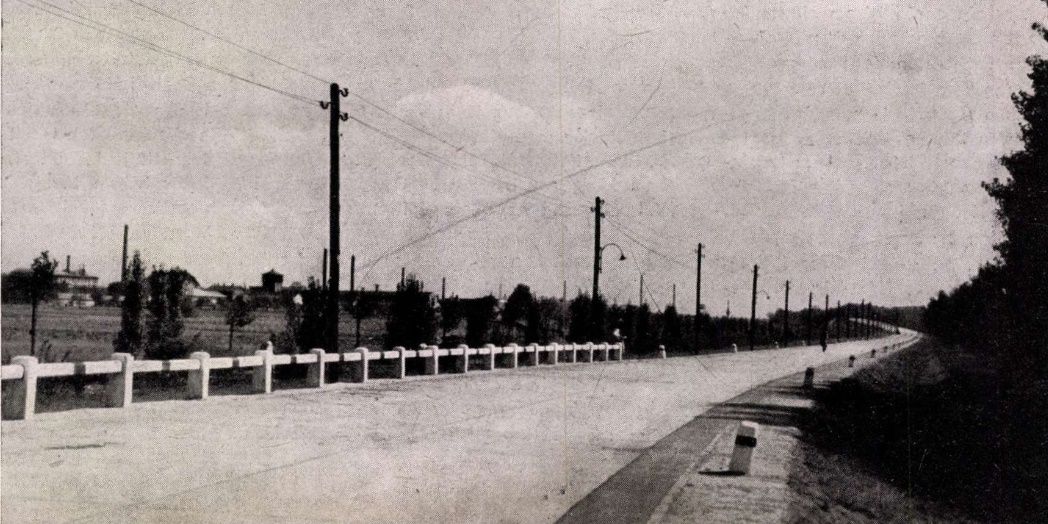
The expressway when opened (Photo: Magyar Építőművészet, 1 January 1944)
When Ferihegy was chosen as the site of the new airport, the decision to ensure quick transportation to it was also reached. A road was seen as the easiest solution. Three routes were considered. The first would have run along Maglódi Road, Fehér Road and Kerepesi Road to reach Rákóczi Road. Another would have run along Gyömrői Road, Vaspálya Street connecting to the city centre through Kőbányai Road and Baross Street. The final, and implemented solution, branched off from Üllői Road.
The final road can be divided into three distinct sections. The first was Üllői Road itself, from here a new section was added that connect with Gyömrői Road over the train tracks and ran in the middle of the roadway separated from other traffic. Houses were destroyed along Gyömrői road to ensure the required width.
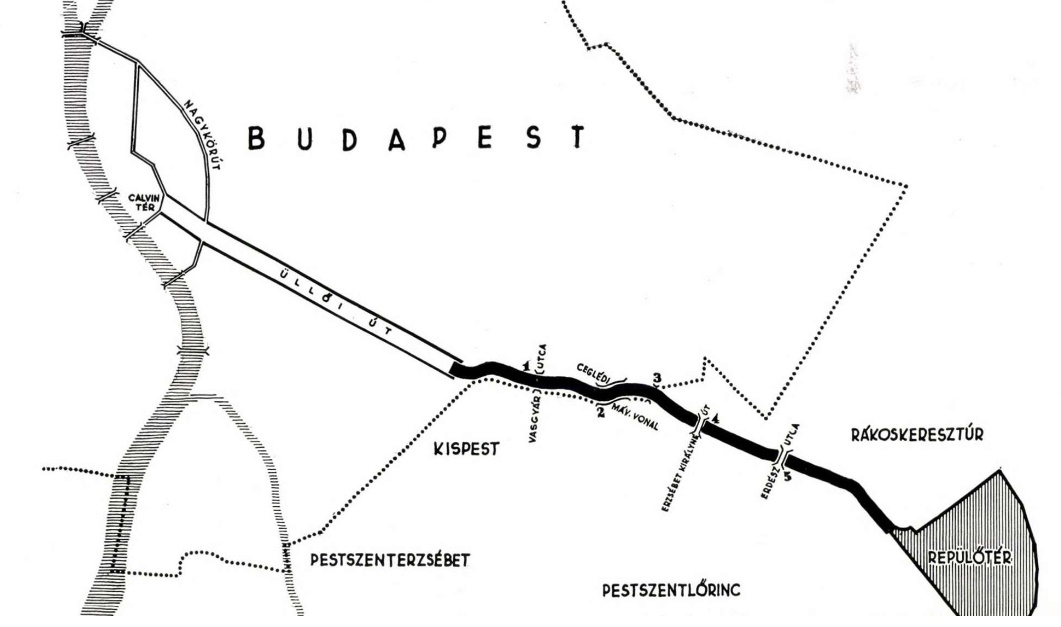
The accepted route (Source: Magyar Építőművészet, 1941/1–12.)
A total of two overpasses and three underpasses were constructed as part of the 9 Million Pengő investment. No hard shoulder was included, and lengths of the road were controlled access to ensure cars could glide safely along. In the modern-day this has become a route of many problems, as if even a minor accident occurs in such a closed system, the whole road can be blocked.
The fact that the road was not enough to serve the airport was apparent by the 1970s, and several plans have been drawn to provide rail transport. In fact, Metro line M3 was originally planned to run all the way to the airport. The station on Határ Road was built in a way to ensure an airport branch could be added, but the economic constraints of the 1970s and 1980s led to limitations.
Various renovations were carried out. In 1986 the overpasses at Újhegyi Road and Gyömrői Road were rebuilt. In the 1990s, plans for the expansion of the road surfaced. By 1996 newspapers were reporting that the road would have a total of six lanes, as the Budapest magazine of Népszabadság wrote on 19 April 1996:
"Soon visitors will travel to Ferihegy Airport on a modern, three-lane highway. Tibor Jancsa, an employee of the Transport Department of the Mayor Office, has told us that the modernisation of the road leading to the airport cannot be postponed much longer."
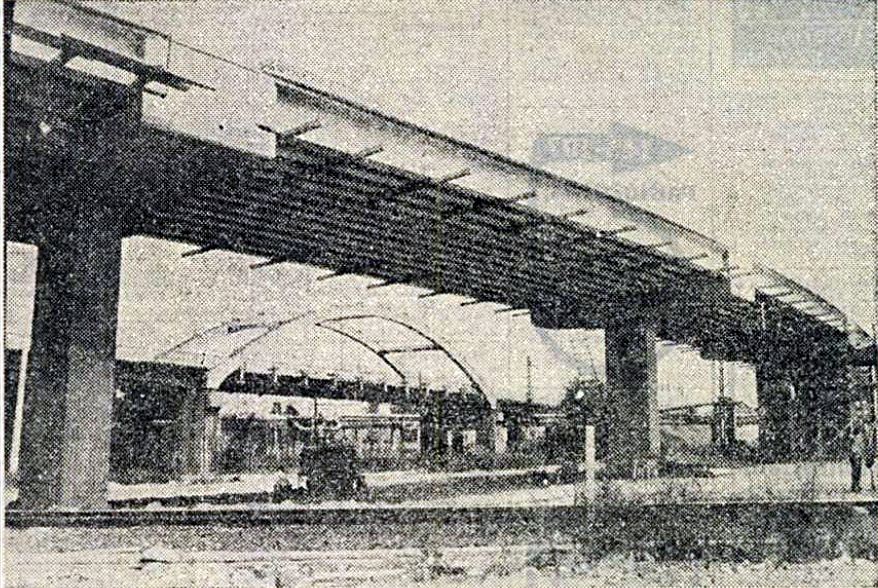
Between July and November 1986 the overpasses were repaired (Photo: Esti Hírlap, 31 July 1986)
Other unique solutions to airport transit were trialled in the 1980s. One of these was PALT (passengers and luggage together) busses. These services would have departed from the city centre and taken passengers directly to their flights, with passport control and check-in being handled on the bus. The front of the bus could even be raised to the door of the aeroplane. The Ikarus prototypes were promising but ultimately never deployed.
Thus, the expressway has remained the only path to the airport. It isn't even much of an expressway anymore, with 50 kph and 70 kph speed limits imposed on several sections. The situation will change soon, as PestBuda reported in February 2020, plans for a rail link to the airport have been completed, ensuring that a fast and efficient, guided transportation option will soon be available.
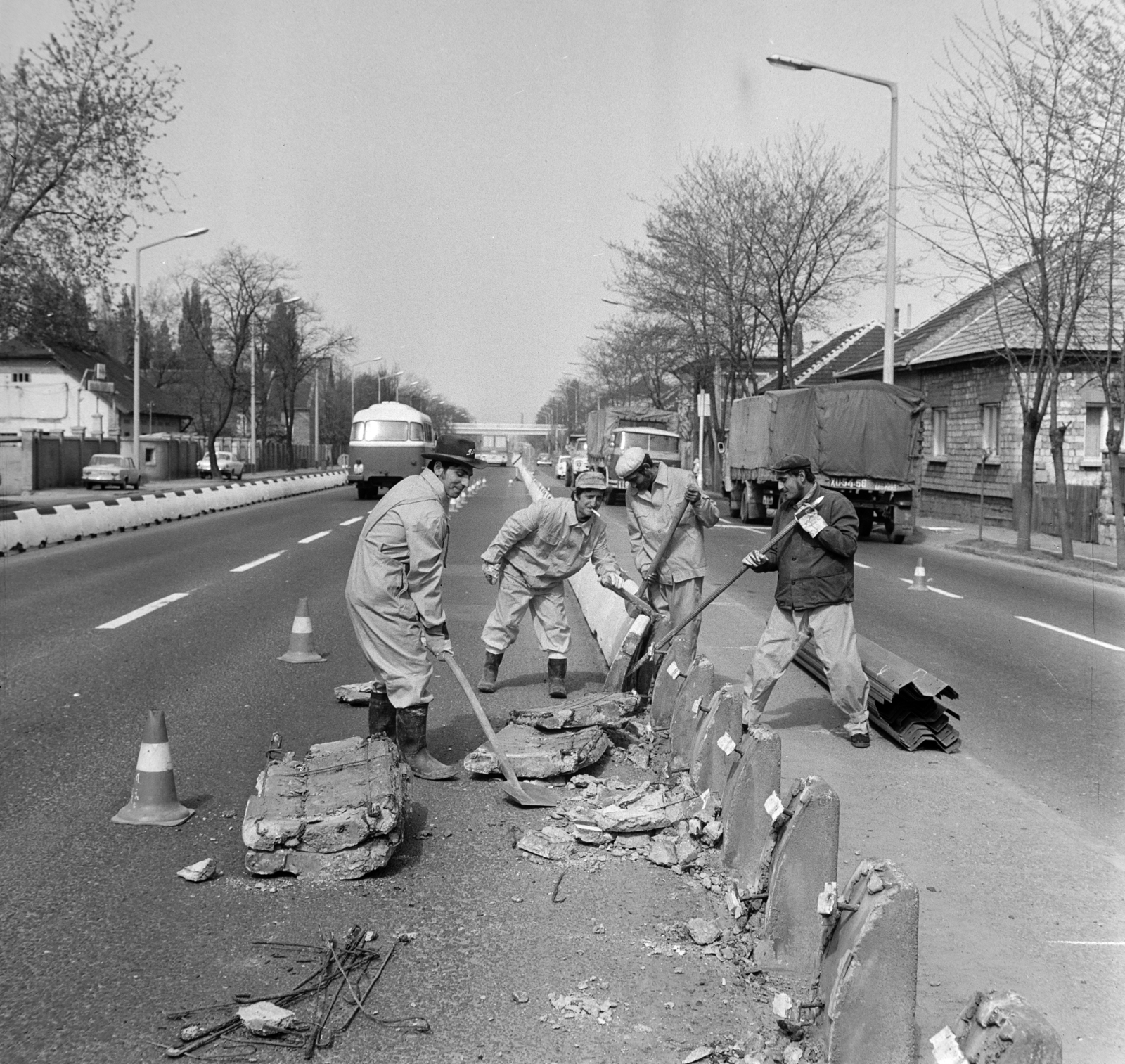
Repairs in 1977 (Photo: Fortepan/No: 194920)
In the future, access will not be handled by a single route. The rail link is being built alongside the expressway and not instead of it. With the planned reconstruction the road will also be more efficient, with two lanes in either direction from Kőbánya-Kispest outwards.
The sections of Gyömrői Road currently fenced off will also be opened and a completely new order of traffic created. Developments to support cycling are also planned on the section. Interestingly, in 1943 separate road sections were created for freight traffic and cyclists along Gyömrői Road in 1943.
Hopefully, once the pandemic has ended, and international travel and airport traffic recovers, the city centre and the airport will be connected by modern and efficient road and rail links.
Cover photo: Road leading to the airport in 1970 (Photo: Fortepan/No.: 97860)

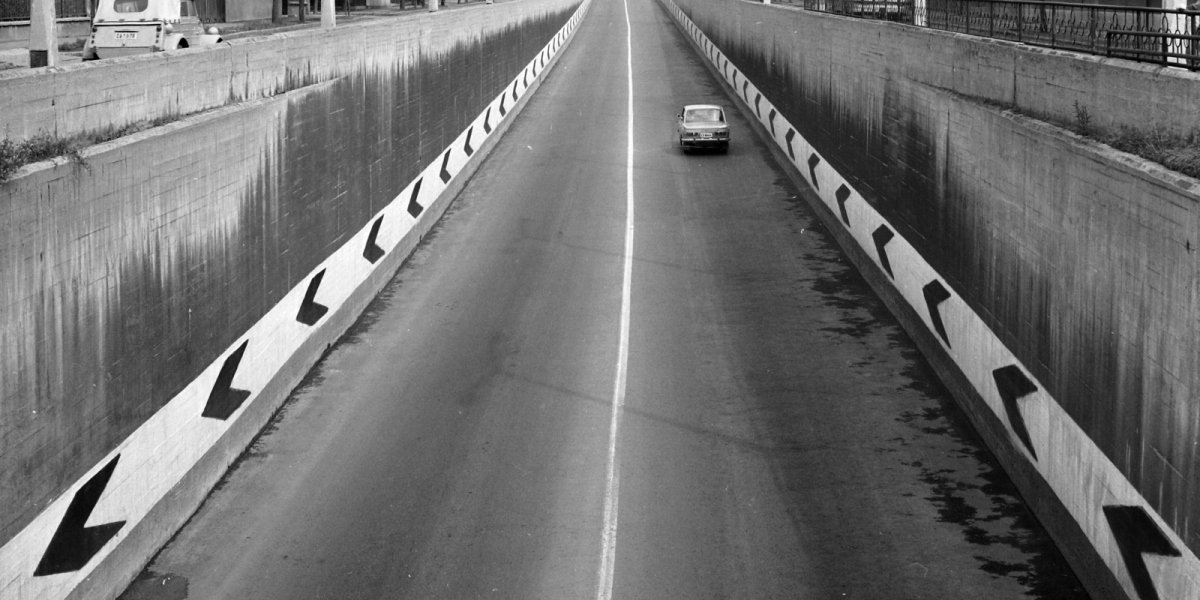



































Hozzászólások
Log in or register to comment!
Login Registration